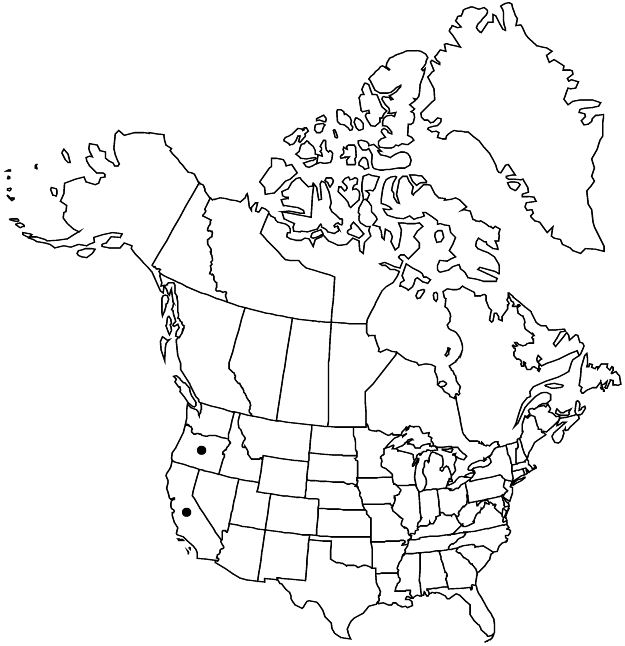Horkelia daucifolia
Bull. Torrey Bot. Club 25: 55. 1898.
Plants rosette-forming to tufted, rarely ± matted, grayish or green. Stems ascending to erect, 1.5–3.5 dm, hairs 2–3 mm proximally, glands sparse to dense distally. Basal leaves weakly planar to loosely cylindric, (4–) 5–12 (–17) × 0.8–3 (–4) cm, usually sericeous to villous, sometimes glabrate; stipules pinnately divided into 3–7 linear to filiform lobes; leaflets 5–10 per side, ± overlapping, obovate to broadly obcordate, 5–15 (–25) × 5–20 mm, ± as wide as long, divided 3/4+ to midrib into (0–) 2–15 linear to oblanceolate lobes 0.4–2 (–3) mm wide, these not restricted to apex. Cauline leaves 3–6; stipules 8–15 mm, deeply 3–7-lobed proximally, 1–3-lobed distally. Inflorescences open to ± congested, flowers arranged individually or in ± corymbiform clusters. Pedicels 2–10 (–20) mm. Flowers 10–15 mm diam.; epicalyx bractlets linear to linear-lanceolate, 2.5–3.5 × 0.5 mm, 2/3 to ± equal to length of sepals; hypanthium 1–1.5 × 3.5–5 mm, less than 1/2 as deep as wide, interior glabrous; sepals ± spreading, abaxially green, 3.5–7.5 mm; petals white to cream, often drying yellowish, cuneate to obcordate, (3.5–) 4–8 × 2–8 mm, apex ± emarginate, sometimes rounded; filaments 1–3 × 0.5–1.5 mm, anthers 0.5–0.8 mm; carpels 5–15, styles 2–4 mm. Achenes dark-brown, 2.4–3 mm, smooth to ± roughened.
Distribution

Calif., Oreg.
Discussion
Varieties 3 (3 in the flora).
D. D. Keck (1938) decided that the leaflet characters previously used to recognize segregates of Horkelia daucifolia were random variables that have not become localized into geographic subunits. At the same time, he established subsp. latior D. D. Keck to accommodate a single collection with leaves approaching those of H. sericata, with the speculation that the population was an amphiploid derivative of the two species. Subsequent collections from the same general area (Scott Mountain, Siskiyou County, California) provide a full range of variation between the extreme with exceptionally wide leaflet lobes and the typical form occurring at the base of the mountain. This variant of the species is accordingly not recognized here, but the extremes with narrower, more numerous leaflet lobes are recognized as varieties that coincide with major river drainages (B. Ertter and J. L. Reveal 2007).
In the descriptions below, the pedicels of all varieties are sparsely pilose in addition to being puberulent or not.
Selected References
None.
Lower Taxa
Key
| 1 | Leaflet lobes 2–5(–8), linear to oblanceolate, 1–2(–3) mm wide; petals cuneate to obovate, 2–4 mm wide. | Horkelia daucifolia var. daucifolia |
| 1 | Leaflet lobes (2–)5–15, linear, 0.4–1 mm wide; petals broadly obovate to obcordate, 4–8 mm wide | > 2 |
| 2 | Pedicels 2–7(–10) mm, puberulent, eglandular; Oregon. | Horkelia daucifolia var. caruifolia |
| 2 | Pedicels 5–10(–20) mm, not puberulent, minutely glandular; California. | Horkelia daucifolia var. indicta |
"thin" is not a number."dm" is not declared as a valid unit of measurement for this property."dm" is not declared as a valid unit of measurement for this property.